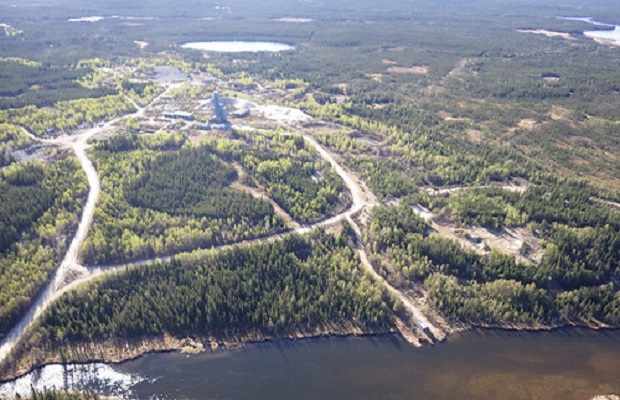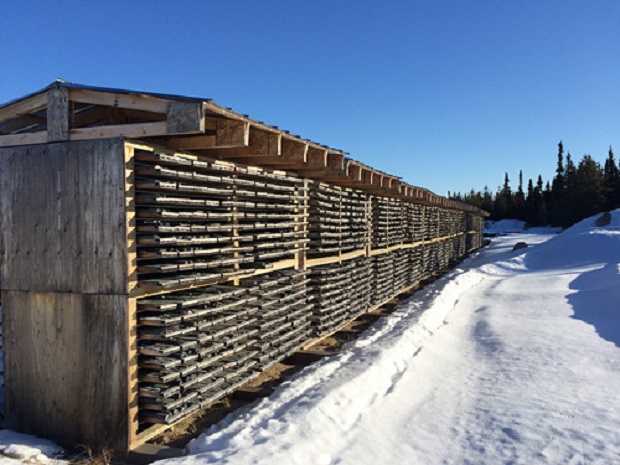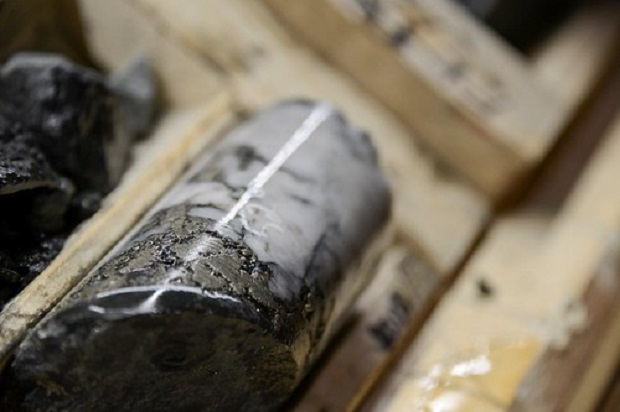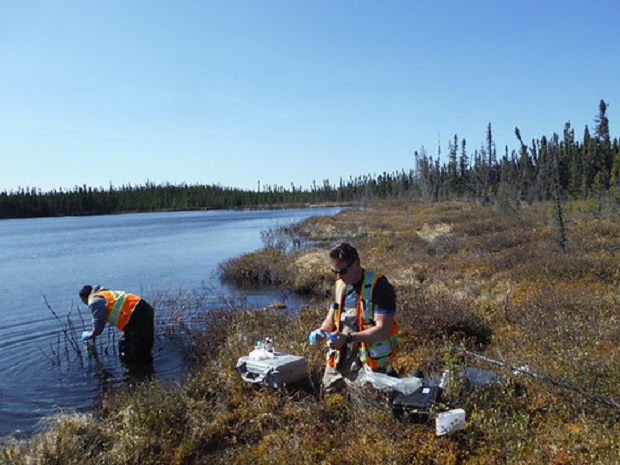Alamos Gold Inc
Lynn Lake Project

The Lynn Lake gold project is a strategic, lower-risk opportunity in a past-producing gold camp. It consists of five near surface deposits and has significant existing infrastructure. Its two primary deposits are the MacLellan mine and the Gordon mine, which were the subject of a positive feasibility study published in December 2017. The study outlines average annual production of 143,000 ounces over a 10-year mine life at mine-site all-in sustaining costs of $745 per ounce. The Environmental Impact Study (EIS) was submitted in May 2020 to satisfy federal and provincial environmental assessment requirements. The permitting process is expected to take approximately two years followed by two years of construction.

History
AuRico Gold acquired a 25% interest in the Lynn Lake project in 2014 by entering into a joint venture agreement with Carlisle Goldfields. The agreement provided AuRico with an option to earn up to a 60% interest by continuing to fund the project and delivering a feasibility study. Following Alamos Gold’s merger with AuRico Gold in 2015, Alamos acquired Carlisle Goldfields, consolidating full ownership of Lynn Lake. A positive feasibility study was completed on the project in December 2017.

Geology and Mineralization
The project is situated in the North belt of the Lynn Lake Greenstone Belt within the Churchill Structural Province of the Canadian Shield. The North belt is a north-facing homocline and consists of rhyolites, overlain by andesite and basalt, sedimentary rocks and an upper balaltic unit. Both the MacLellan and Gordon deposits are located within this belt, which has been termed the “Rainbow Trend”.
MacLellan mine project: The mineralized system is hosted within a unique stratigraphic sequence known as the Agassiz Metallotect within the Wasekwan Group rocks of the North belt. The Agassiz Metallotect comprises interlayered siltstones, basalts, iron formations and minor felsic volcanics. The MacLellan mine is hosted by an interbedded sequence of biotite-rich to siliceous siltstone and high magnesium basaltic flows and minor tuffs. Overlying and underlying this mine sequence are massive and fragmental mafic volcanic rocks. The mine is subdivided longitudinally into three mineralized deposits, from west to east they are the Rainbow-Dot deposit, the MacLellan deposit and the Nisku deposit. All of these deposits are located south of a major east-west trending fault structure known as the North Shear Zone.
Gordon mine project: The deposit is hosted in a Pre-Cambrian sedimentary iron formation. The iron formation in the Gordon area is six kilometres long by 600 metres wide and is predominantly composed of an oxide facies iron formation that is intercalated with clastic sediments. Mineralization is in discordant sulphide lenses within silicified, chloritized and sulphidized oxide facies iron formation.

Mining and Processing
The Gordon and MacLellan deposits will be developed using conventional truck and shovel open pit mining methods. They are expected to operate concurrently for the first six years of operation, with Gordon being depleted first given its higher grades and lower stripping ratio. As the Gordon pit nears depletion, mining equipment will be transferred to MacLellan and utilized over the remainder of its mine life. Following pre-production periods, combined mining rates are expected to range between 20.5 and 27.0Mt per year over the first seven years.
Lynn Lake’s proposed process plant will be a conventional milling and leaching/carbon-in-pulp (“CIP”) operation with a 7,000 tpd capacity. It will consist of crushing, grinding, thickening, pre-aeration and leaching, CIP, cyanide detoxification, carbon elution and regeneration, and gold smelting. Low-cost hydroelectric power will be supplied by Manitoba Hydro. Over the life of mine, combined gold recoveries are expected to average 92%. A tailings management facility will be constructed approximately 3 kilometres northeast of the planned open pit and plant site at MacLellan.
Source: https://www.alamosgold.com/operations/development-projects/lynn-lake-canada/default.aspx

|
Development Boomtruck Operator
- Safely move material as directed. Report and document all material moved accurately to his/her Supervisor;
- Accurately report to supervisor the material needed in storage areas U/G
Rock Breaker Operator
- Operate rock-breaker;
- Perform pre-op and post-op inspections on equipment
Scissordeck Bolter
- Install ground support as per company standard;
- Install and maintain services;
- Load development rounds
Ground Control Engineer
- QAQC of shotcrete, ground support installation, grouting, ground support auditing and paste fill;
- Document inspections of underground stoping and development;
- Rock mass characterisation and classification
Mine Engineer
- Assist with blast improvement investigations;
- Look for opportunities to improve efficiencies;
- Provide guidance to EIT’s
Construction Miner - Transmixer
- Operate equipment such as transmixer and shotcrete sprayer;
- Assist in installation, modification and repairs of UG infrastructures
Geological Technician/or Junior Geologist
- 3D digitizing of underground geological mapping and integration into 3D mining software.
- Digitize geological surface geological mapping lithology, structure and mineralization
- Digitize chip sampling of ore development headings as required
Mill Operator/Labourer
- Works and ensure all workers work in compliance with the Occupational Health & Safety Act, Regulations for Mines and Mining Plants and all other applicable government standards and regulations;
- Adheres to and enforces all safety and environmental considerations
Document Control Coordinator - Phase III
- Implement document and data management solutions with a primary focus on workflow, document control, information security and records management.
- Provide ongoing training and support to end users in the use of the document management system.
- Ensure project and operations teams comply with the document management requirements and procedures
Project Controls Manager - Phase III
- Development and implementation of project controls systems and procedures.
- Working with accounting personnel to ensure accurate reporting and approval of accruals, forecasts, and project status.
- Early identification and notification of deviations and variances to project baseline schedule and spend